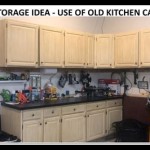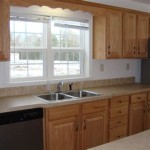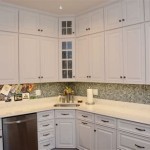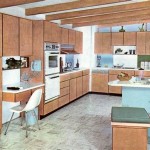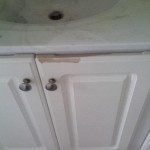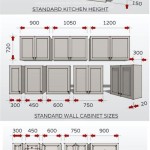DIY: Painting Kitchen Cabinets White
Painting kitchen cabinets white is a popular and cost-effective way to transform the look of a kitchen without undertaking a full renovation. This project can brighten the space, create a clean and modern aesthetic, and increase the overall value of the home. However, achieving a professional-looking finish requires careful preparation, the right materials, and meticulous execution. A rushed or poorly executed paint job can result in chipping, uneven coverage, and a less-than-desirable outcome. Therefore, understanding the proper steps and techniques is crucial for success.
This article provides a comprehensive guide to painting kitchen cabinets white, covering everything from gathering the necessary supplies to applying the final coat of paint. It emphasizes the importance of preparation, detailing the steps involved in cleaning, sanding, and priming the cabinets for optimal paint adhesion. It also outlines the best practices for selecting the right type of paint, applying smooth and even coats, and troubleshooting common issues that may arise during the project.
Key Point 1: Thorough Preparation is Paramount
The success of any cabinet painting project relies heavily on the preparation phase. Proper preparation ensures that the paint adheres well to the surface, resulting in a durable and long-lasting finish. Skipping or shortcutting these steps can lead to peeling, chipping, and an overall unprofessional appearance.
First and foremost, remove all hardware from the cabinets, including hinges, knobs, and pulls. This prevents paint from getting on the hardware and allows for easier access to all surfaces. Store the hardware in labeled bags to avoid confusion during reassembly. Then, carefully remove the cabinet doors and drawers from the frames. Label each door and drawer with masking tape, indicating its original location. This will save time and frustration when reinstalling them later.
Next, thoroughly clean the cabinets with a degreasing cleaner. Kitchen cabinets accumulate grease, grime, and food splatters over time, which can hinder paint adhesion. Use a strong degreaser and scrub the surfaces thoroughly. Rinse with clean water and allow the cabinets to dry completely. This step is especially important for cabinets near the stove or sink, where grease and moisture tend to accumulate.
Sanding is a critical step in preparing the cabinets for paint. Sanding creates a slightly rough surface, providing the paint with something to grip onto. Use a medium-grit sandpaper (around 120-grit) to lightly sand all surfaces of the cabinet doors and frames. Focus on removing any existing gloss or imperfections. After sanding, use a tack cloth or vacuum to remove any sanding dust. Failure to remove the dust will result in a gritty finish.
Once the cabinets are clean and sanded, apply a coat of primer. Primer creates a uniform surface and further enhances paint adhesion. Choose a high-quality primer specifically designed for cabinets. Apply the primer in thin, even coats, following the manufacturer's instructions. Allow the primer to dry completely before proceeding to the next step. In some cases, particularly with dark wood cabinets, two coats of primer may be necessary to fully block the original color and ensure a consistent white finish.
Key Point 2: Selecting the Right Paint and Application Techniques
Choosing the right type of paint and employing proper application techniques are essential for achieving a professional-looking and durable finish. The type of paint used will affect the appearance, durability, and ease of cleaning of the painted cabinets.
For kitchen cabinets, alkyd or acrylic enamel paints are generally recommended. Alkyd paints offer excellent durability and a smooth, hard finish. However, they tend to have a stronger odor and require mineral spirits for cleanup. Acrylic enamel paints are water-based, low in odor, and easy to clean up with soap and water. They also offer good durability and a smooth finish. Consider a paint specifically formulated for cabinets and trim for optimal performance.
Selecting the correct sheen is also important. Semi-gloss or satin finishes are popular choices for kitchen cabinets. These sheens are durable, easy to clean, and reflect light well, brightening the kitchen. Avoid using flat paint, as it is more difficult to clean and less resistant to moisture and stains.
When it comes to application, using high-quality brushes and rollers is crucial. Use a fine-bristled brush for cutting in around edges and details. A small, dense foam roller is ideal for applying paint to the flat surfaces of the cabinet doors and frames. Avoid using cheap brushes and rollers, as they can leave brush marks and lint in the paint.
Apply the paint in thin, even coats. Avoid applying too much paint at once, as this can lead to drips and runs. Allow each coat of paint to dry completely before applying the next coat. Lightly sand between coats with fine-grit sandpaper (around 220-grit) to remove any imperfections and create a smooth surface for the next coat. Remember to remove sanding dust before applying the next coat of paint.
Consider using a paint sprayer for a more professional finish. A paint sprayer can provide a smooth, even coat of paint without brush marks or roller stipple. However, using a paint sprayer requires practice and proper technique. It is also important to properly mask off the surrounding areas to protect them from overspray. If using a paint sprayer, thin the paint according to the manufacturer's instructions.
Key Point 3: Addressing Common Issues and Ensuring a Durable Finish
Even with careful preparation and application, certain issues may arise during the cabinet painting process. Knowing how to address these issues can help ensure a professional and durable finish.
One common issue is paint drips and runs. If you notice drips or runs while the paint is still wet, immediately brush or roll them out. If the paint has already dried, use fine-grit sandpaper to sand down the drips or runs until they are smooth. Then, touch up the area with another coat of paint.
Another issue is brush marks or roller stipple. To minimize brush marks, use a fine-bristled brush and apply the paint in smooth, even strokes. To minimize roller stipple, use a small, dense foam roller and avoid pressing too hard. If brush marks or roller stipple are visible after the paint has dried, lightly sand the surface with fine-grit sandpaper and apply another coat of paint.
Chipping and peeling are common problems with poorly prepared or improperly painted cabinets. To prevent chipping and peeling, ensure that the cabinets are thoroughly cleaned, sanded, and primed before painting. Use a high-quality paint specifically designed for cabinets and apply it in thin, even coats. Avoid using harsh cleaning products on the painted cabinets, as this can damage the finish.
To further enhance the durability of the painted cabinets, consider applying a clear topcoat. A clear topcoat will protect the paint from scratches, stains, and moisture. Choose a clear topcoat specifically designed for cabinets and apply it according to the manufacturer's instructions. Allow the topcoat to dry completely before reinstalling the hardware and cabinet doors.
Finally, allow the paint to fully cure before reinstalling the hardware and cabinet doors. Curing is the process by which the paint hardens and becomes more durable. Refer to the paint manufacturer's instructions for the recommended curing time. Reinstalling the hardware and cabinet doors before the paint is fully cured can damage the finish.
By following these guidelines, individuals can successfully paint their kitchen cabinets white, achieving a beautiful and durable finish that transforms their kitchen space without the expense of a complete remodel. Careful planning, diligent preparation, and attention to detail are key to achieving a professional-looking result that will enhance the value and enjoyment of the home for years to come.

Painting Your Kitchen Cabinets White

Update On Our Diy White Painted Kitchen Cabinets 2 Years Later

Pa Wedding Photographer Diy Painted Kitchen Cabinets Before After

Painting Your Kitchen Cabinets White

How To Paint Kitchen Cabinets White In 5 Days For 150 The Nutritionist Reviews

How To Paint Your Kitchen Cabinets White Colors And Craft

How To Paint Kitchen Cabinets White Let S Furniture

How To Paint Oak Cabinets White Best Diy Guide 2024

How To Paint Laminate Kitchen Cabinets Perfect Finish Tips

Pa Wedding Photographer Diy Painted Kitchen Cabinets Before After
Related Posts

